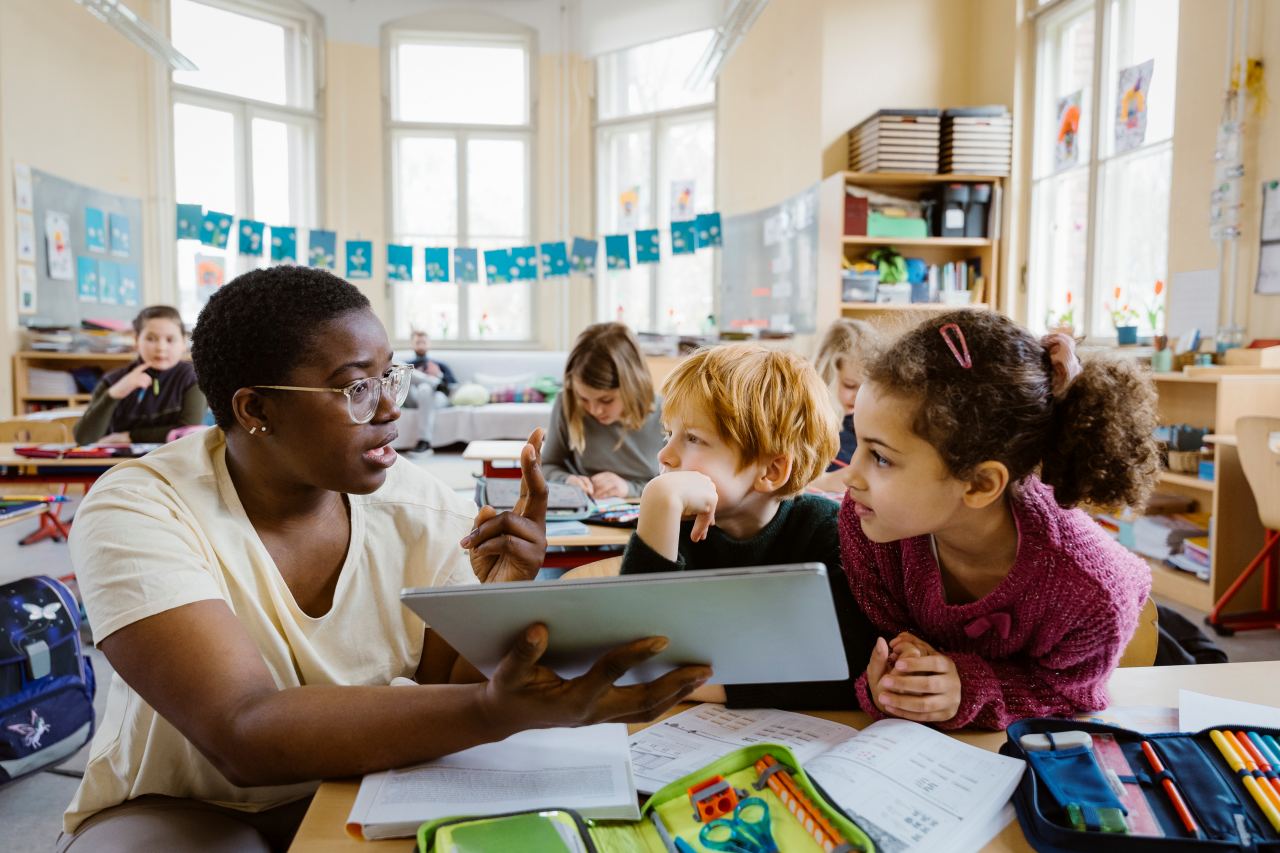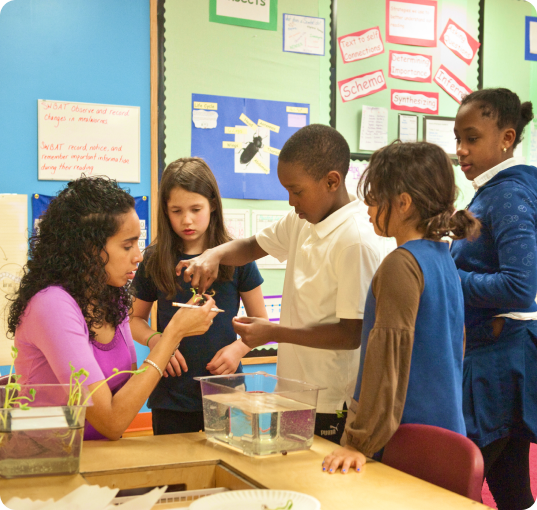Find the Best Primary Science Tuition Singapore for Enhanced Learning
Find the Best Primary Science Tuition Singapore for Enhanced Learning
Blog Article
A Comprehensive Guide to the Different Understanding Methods in Primary Science Direction
The exploration of varied discovering approaches in key scientific research direction provides a possibility for instructors to boost trainee engagement and comprehension considerably. By checking out hands-on understanding strategies, inquiry-based techniques, and collective techniques, we can identify effective techniques that accommodate numerous finding out designs. In addition, the assimilation of innovation and distinguished direction plays a critical role in fostering a comprehensive atmosphere. However, the question continues to be: how can these techniques be effectively applied in the classroom to optimize their impact? The answer depends on a better evaluation of each approach and its effects for mentor scientific research.

Hands-On Discovering Techniques
Hands-on discovering techniques play an essential role in main scientific research instruction, involving students in energetic expedition and trial and error. These methods enable students to engage straight with products and sensations, cultivating a much deeper understanding of scientific ideas. By utilizing manipulatives, designs, and real-life experiments, teachers produce a setting where pupils can observe, assume, and examine their concepts.
Such strategies not just boost understanding however likewise cultivate vital thinking and problem-solving skills. When students take part in tasks like constructing straightforward machines, growing seeds, or conducting chain reactions, they are encouraged to ask concerns and look for responses with their own observations. This experiential approach aids to debunk complicated scientific concepts, making them a lot more relatable and easily accessible.
Additionally, hands-on knowing promotes collaboration amongst peers, as trainees typically work in groups to perform experiments or share findings. This team effort not only improves their understanding experience however also develops crucial social abilities. Inevitably, incorporating hands-on methods in main science direction fosters a long-lasting love of knowing and inquisitiveness regarding the all-natural world, laying a solid foundation for future scholastic pursuits in scientific research and past.
Inquiry-Based Knowing
Inquiry-based learning is a training approach that motivates students to ask concerns, examine sensations, and construct their very own understanding of clinical concepts. This approach moves the focus from typical teacher-led instruction to an extra student-centered experience, where learners take the effort in their instructional journey. By promoting inquisitiveness, inquiry-based knowing advertises deeper involvement with the material, enabling pupils to explore topics in a purposeful context.
In practice, this technique typically entails hands-on experiments, observations, and vital reasoning activities that line up very closely with the scientific method. Trainees are motivated to create theories, layout examinations, and analyze data, which cultivates vital abilities such as analytical and problem-solving reasoning. The function of the instructor in this structure is to promote expedition, leading students with the query procedure while urging independent idea and collaboration.
In addition, inquiry-based learning supports a feeling of possession over the learning process, encouraging pupils to seek expertise proactively. This technique not just boosts understanding of clinical principles but likewise promotes a long-lasting love for learning, furnishing pupils with the abilities necessary to navigate an increasingly complex world.
Collaborative Knowing Approaches
Collaborative discovering methods empower pupils to participate in purposeful communications with peers, cultivating a common obligation for their instructional outcomes. In main scientific research direction, these strategies motivate learners to function with each other to check out scientific concepts, address issues, and conduct experiments (primary science tuition Singapore). By taking part in team tasks, pupils can utilize see this site diverse point of views, enabling for richer understanding and retention of scientific understanding
One secret facet of collective discovering is the focus on interaction skills. Trainees have to articulate their ideas, pay attention actively to others, and bargain ideas, every one of which are essential expertises in both real-world and academic contexts. This social interaction not just improves their understanding of clinical principles but also promotes synergy and dispute resolution abilities.
Moreover, collaborative learning frequently causes increased motivation and engagement. When pupils see the worth of their contributions within a team, they are a lot more most likely to take ownership of their knowing trip. Educators can facilitate this procedure by designing structured group jobs that straighten with educational program goals while offering assistance on efficient collaboration strategies. Generally, including collaborative discovering techniques in primary scientific research instruction cultivates a vibrant discovering atmosphere that prepares students for future academic and social difficulties.
Innovation Integration in Science
The assimilation of innovation in key science guideline enhances discovering experiences by providing ingenious devices and resources that support different training approaches, consisting of joint learning - primary science tuition Singapore. Using electronic systems, simulations, and interactive applications permits trainees to involve deeply with clinical principles, promoting a much more hands-on method to learning
Virtual laboratories, as an example, allow learners to conduct experiments securely and successfully, advertising inquiry-based knowing. These devices can imitate real-world clinical situations, enabling students to picture complicated procedures that would certainly be tough to replicate in a traditional class setup. Moreover, innovation promotes communication and cooperation amongst students, as they can share searchings for and interact on projects via online platforms.
In addition, multimedia presentations and educational video clips can enhance lessons by accommodating diverse discovering styles, making abstract concepts more accessible. Data evaluation devices also encourage pupils to gather and translate scientific data, reinforcing important believing skills. On the whole, the calculated incorporation of modern technology in key scientific research instruction not only enhances engagement see here now but also prepares trainees for a technologically advanced culture, furnishing them with necessary skills for future clinical endeavors.
Differentiated Direction Strategies
Set apart direction techniques are necessary for dealing with the diverse demands of students in key science education and learning. These methods enable educators to customize their teaching approaches to accommodate varying capabilities, rate of interests, and finding out designs within the classroom. By using distinguished instruction, instructors can create a comprehensive environment that cultivates engagement and boosts understanding of clinical ideas.
One effective method is to use flexible organizing, which allows pupils to work together with peers at similar ability levels or with differing perspectives. This approach urges peer discovering and straight from the source advertises critical thinking. Furthermore, using selections in tasks can equip pupils, allowing them to pick jobs that reverberate with their rate of interests while still satisfying curricular goals.
In addition, including tiered assignments is one more useful technique. By designing tasks with differing degrees of intricacy, educators can make certain that all trainees are properly challenged, despite their efficiency. Making use of developmental assessments to determine comprehending further allows instructors to change their training approaches dynamically, ensuring that each learner receives the support they need.
Ultimately, carrying out differentiated instruction approaches in key science education and learning not only enhances pupil discovering results yet additionally cultivates an interest for science, preparing pupils for future scholastic searches.

Conclusion
In summary, effective key science instruction necessitates a diverse approach that includes hands-on knowing, inquiry-based techniques, and joint techniques. The assimilation of innovation and differentiated guideline even more provides to diverse learning designs, promoting an atmosphere conducive to expedition and critical reasoning.
The expedition of varied discovering techniques in key scientific research direction provides an opportunity for teachers to enhance student engagement and understanding considerably.Hands-on understanding methods play a crucial function in main science guideline, engaging trainees in active expedition and trial and error.Inquiry-based knowing is an instructional technique that encourages pupils to ask inquiries, explore phenomena, and create their very own understanding of scientific principles.Collective understanding strategies equip pupils to engage in purposeful communications with peers, promoting a shared obligation for their educational end results. Generally, including collaborative understanding strategies in main scientific research instruction cultivates a dynamic discovering atmosphere that prepares students for future scholastic and social challenges.
Report this page